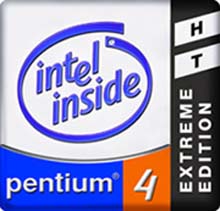 Forbes.com reported Moore's Law Due For Retirement
Forbes.com reported Moore's Law Due For Retirement
Forty years ago next week, an obscure trade magazine called Electronics published an article by one of the electronics industry's leading thinkers, the director of research and development for the semiconductor division of the Fairchild Camera and Instrument Corp. It was entitled "Cramming More Components Onto Integrated Circuits." The author was Gordon Moore. Three years after the article was published he, Robert Noyce and Arthur Rock would settle on a contraction of the phrase "integrated electronics" as the name for their new company: Intel
His forward-looking article has for years been widely acknowledged as Moore's Law, one of the great benchmarks of faith in technological innovation as an engine of economic growth. It's also widely misunderstood. The key section of Moore's piece doesn't exactly sing. "The complexity for minimum component costs has increased at a rate of roughly a factor of two per year," he wrote. "Over the longer term, the rate of increase is a bit more uncertain, although there is no reason to believe it will not remain nearly constant for at least ten years." Loosely translated, Moore was arguing that the number of transistors which could be economically built on a chip tended to double every year. In those days, the most advanced chips had about 50 transistors, but he argued it would be economical to build chips with 65,000 transistors by 1975. On the whole Moore's Law has shown to be prescient, but by the time of its 50th anniversary in 2015, it will probably no longer be true.
The most advanced chips currently being manufactured have elements 90 nanometers in size, and by the end of the year, smaller chips with 65-nanometer elements will come to market. Chip manufacturers tend to upgrade their manufacturing technology to allow for the smaller transistors every two years or so. Smaller transistors can be crowded in greater numbers onto ever-small slices of silicon, increasing the amount of work a chip can do. You can expect Intel, Advanced Micro Devices, IBM and others to further shrink their manufacturing capabilities to 45 nanometers by 2008 and 32 nanometers by 2010. How they'll get to that point is generally well understood, but looking beyond 32 nanometers is hazy, says Kevin Krewell, a chip technology analyst with Instat/MDR in San Jose, Calif.
Many have predicted this before only to regret it later. But I'm willing to bet that by the time Moore's Law turns 50, it will be nothing but a memory. It's due for retirement.
Many thought Moore was wrong when he said what he said, and to some extent they are right, but not for the reason they thought. They did not think it possible that the number of chips could possibly double every year, and in fact they have more than doubled every year since then. There may be a point in time when that will no longer take place, but I would not want to be my lunch money on it. I might go hungry.
Intel is unveiling its dual core Pentiums on the 40th aniversary of Moore's Law
Friday, April 15, 2005
Moore's Law Due For Retirement
Subscribe to:
Post Comments (Atom)




No comments:
Post a Comment